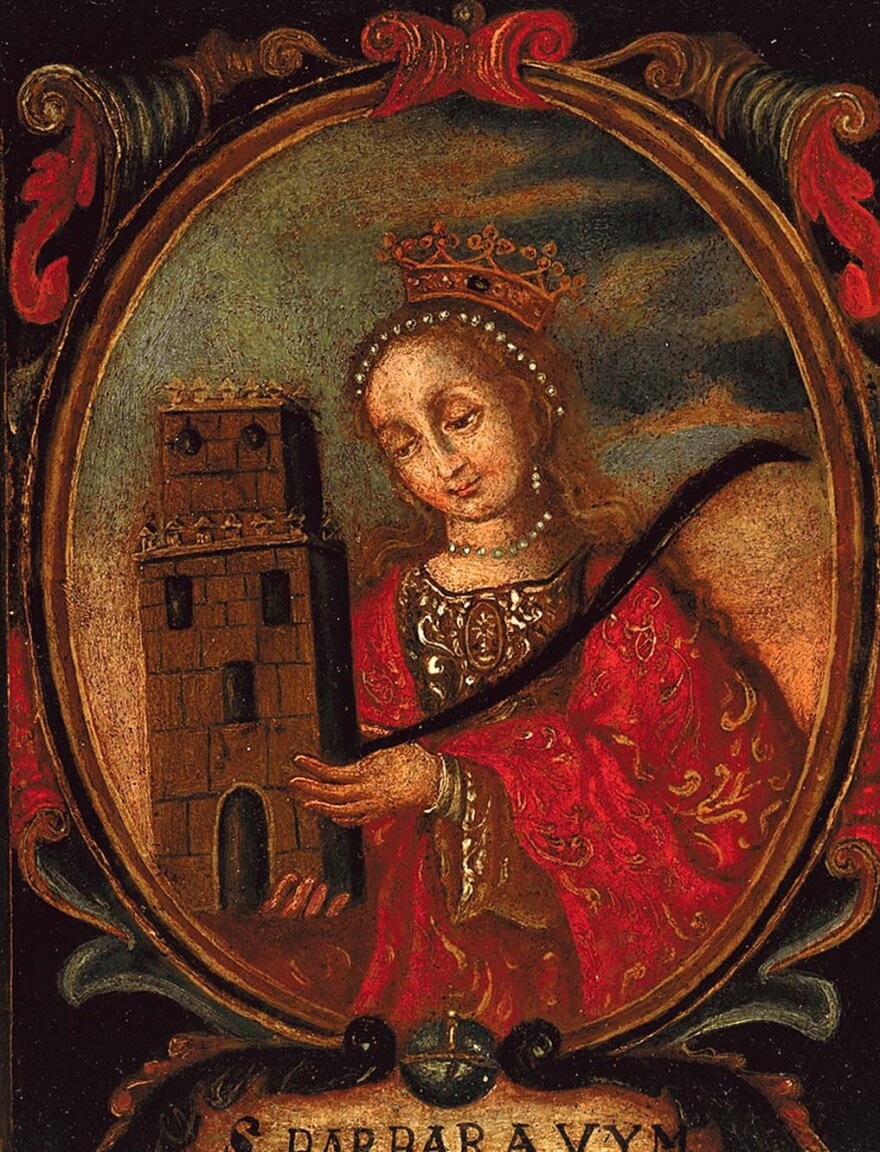It's a big day in the religious and culinary calendar of the Republic of Georgia. Georgian Orthodox believers observe Dec. 17 as St. Barbara's Day, in honor of an early Christian martyr. And they typically mark the occasion by eating a type of stuffed bread called lobiani, baked with a filling of boiled beans with coriander and onions.
It's a tradition that's also observed at many restaurants in Russia, where Georgian food is the favorite foreign cuisine — fresher, spicier and more imaginative cooking than many Russians ever get at home. In fact, Georgian cookery is to Russia what Italian cuisine is to America — a national education of the taste buds, an illustration of the lesson that at the heart of the good life is good food.
The Russian love of Georgian food is made more poignant by the fact that the two countries have been at odds since before their brief 2008 war.
Georgian cuisine takes its inspiration from the country's geography, perched in the mountains at the eastern edge of the Black Sea, strongly original, but with elements of the Middle East, Central Asia and Eastern Europe.
Dinner at a typical Georgian restaurant starts with an array of appetizers that include khachapuri, a rich, cheese-filled bread that comes in all sorts of regional variations.
Have a side of veggies with that, such as Badrijani nigvzit, eggplant with ground walnuts, pomegranates seeds and juice, or ajapsandali, a spicy concoction of eggplant, potatoes, tomatoes and peppers.

If you go to a restaurant with Georgian friends, you'll be made to eat your way through salads, meaty soups such as kharcho, and salty cheeses called sulguni before you're even allowed to contemplate the entrees.
Then it's on to fish done 21 ways, or satsivi, which is chicken or turkey in a walnut sauce, or chakapuli lamb stew.
In case you've noticed that walnuts feature prominently in many Georgian recipes, you will have touched upon a tender point of Georgian pride.
Some Georgians in Russia claim that greedy Russian restaurant owners have ruined the flavor of the most popular Georgian dishes by substituting corn meal for ground walnuts. Now that would be like fobbing off canned spaghetti for the genuine al dente at an Italian restaurant in New Jersey.
At some point in your culinary odyssey, you'll get to the khinkali, dumpling purses filled with lamb and hot broth.
Khinkali dough is pinched together to form a stem, which you hold while nibbling a hole in the dumpling, through which you sip the juice before devouring the filling.
In Georgia, all this would be washed down with pitchers of wine, but here's where geopolitics have gotten in the way of gastronomy.
As a side effect of the bitter conflict between Russia and Georgia, imports of Georgian wine and mineral water are banned in Russia.
Georgian restaurants in Moscow make do with imports from France, Chile and Australia, but Georgian food lovers will tell you it's not the same.
Since October, when elections brought a new regime to power in Georgia, hopes have been raised that the wine ban might be lifted as a gesture of good will. Since most of Georgia's wine had been imported to Russia before the war, it may be a real economic gesture as well.
And just last week, diplomats from the two countries met in Switzerland for their first direct talks since the war.
Both Russians and Georgians have described their national relationship as something like a passionate love affair gone sour—maybe wine and walnuts can help restore the magic.
Copyright 2021 NPR. To see more, visit https://www.npr.org.



